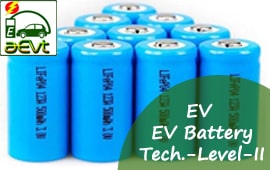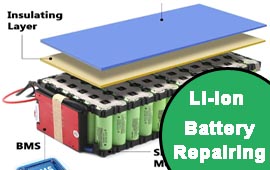Know before Rooftop Solar Installation at your Home
PR Newswire: Before installing rooftop solar panels, homeowners, should assess their energy needs, ensure roof suitability, and understand local regulations. Consider the cost, available subsidies, and the installer's reputation. Proper planning and preparation, including fixing any roof damage and understanding net metering policies, are crucial for a successful installation.

A Bill of Quantities (BOQ) for a rooftop solar project is a detailed document that lists all the materials, equipment, and labor needed for the installation, along with their quantities and specifications. It's crucial for accurate cost estimation, procurement, and project management. By carefully considering these factors, homeowners in Uluberia can make informed decisions and enjoy the benefits of rooftop solar power.
Know before rooftop solar installation at your home:
By carefully considering these factors
- Review past electricity bills: Understand your average monthly energy consumption.
- Consider future needs: Factor in any planned changes like new appliances or electric vehicles.
- Determine system size: How much energy you consume, rooftop size, and budget determines the type of system your house will need. Choose a solar panel system that meets your needs without being oversized.
-
Roof condition:Ensure your roof is in good condition and can support the weight of the panels.
-
Orientation and tilt:South-facing roofs with a 30-degree tilt are ideal, but other orientations can still work.
-
Sunlight exposure:Make sure your roof receives adequate sunlight and minimize shading from trees or other obstructions.
- Net metering: Check if your local DISCOM (electricity distribution company) offers net metering and understand the process.
- Permits and approvals: Ensure you obtain the necessary permits and approvals before installation.
- State and Central Govt. policies: Be aware of any specific rules or incentives offered by the state or central government.
- Research installers: Look for reputable and experienced installers in your area. Optimum sunlight exposure is paramount for efficient power production. A roof solar installation expert can help you design a layout of the solar panels and plan the size, structure, and placement of supporting equipment. Installing solar panels is not a task for anybody. Choose the installation expert wisely, as they will help you set up the whole system and perform a test to identify any faults and problems.
- Check their credentials: Ensure they are IST certified professionals.
- Get multiple quotes: Compare quotes, warranties, and system specifications.
-
Cost of installation:Factor in the cost of panels, inverters, installation, and potential maintenance.
-
Subsidies and financing:Explore available subsidies and financing options, including the PM Surya Ghar Muft Bijli Yojana. Furthermore, the banks will provide loans at lower interest rates to boost the solar industry. If you are a farmer, you can get even more incentives. So, ask for financial aid from your solar panel suppliers. We have a team to help you get the maximum benefit of applicable incentives.
-
Payback period:Understand the estimated time it will take for the system to pay for itself through energy bill savings.
6. Optimum System Design:
- System design documents: Before giving work order, collect system design PVSyst report, ROI report, Energy gereration and P90 report, Single Line electrical drawing, BOQ, Quatation etc. You have full right to collect this project detail report and a qualified solar service provider will hand over documents.
- After Installation Documents: After installation, solar company/installer/solar service provider will hand over all item warrantie paper, Tax invoice. Without tax invoice home owner can't get warrantie in future. Collect electrical connection drawing SLD sheet to O&M in future. Take guide and training for system Operation and maintainance.
A Solar Power Plant Bill of Quantities (BOQ) is a detailed list of all materials, equipment, and labor needed for a solar power plant project, including quantities, specifications, and unit rates. It's crucial for accurate cost estimation, resource management, and ensuring the project is completed to the required standards.
The BOQ serves as a reference document for all parties involved in the rooftop solar project, ensuring transparency, accountability, and successful project completion.
| Sl No | Item | Reference unit |
| 1 | MAIN EQUIPMENT | |
| 1.1 | DC Side | |
| 1.1.1 | PV module Wp | Number of PV modules |
| 1.1.2 | AJB/MJB | DC electrical boxes |
| 1.1.3 | DCDB | DC electrical big boxes |
| 1.2 | AC Side | |
| 1.2.1 | Solar Inverter | Main peak power |
| 2 | CIVIL WORKS | |
| 2.1 | Site Conditions | |
| 2.1.1 | Clearing and grubbing | Fence area |
| 2.1.2 | Topsoil and vegetation removal | Removal area |
| 2.1.3 | Internal roads | Roads length |
| 2.1.4 | Road ditches | Road ditches length |
| 2.2 | Foundations | |
| 2.2.1 | Power Station foundation | Number foundations PS |
| 2.2.2 | Structure Poles Op.1 - Driving into the ground | Number foundations structure |
| 2.3 | Trenches and manholes | |
| 2.3.1 | Low Voltage manholes | Number LV manholes |
| 2.3.2 | Medium Voltage manholes | Number MV manholes |
| 2.3.3 | Trench 400mm x 1000mm | Lv trenches |
| 2.3.4 | Trench 800mm x 1000mm | Lv trenches |
| 2.3.5 | Trench 800mm x 1000mm | Mv trenches |
| 2.3.6 | Trench 800mm x 1500mm | Mv trenches |
| 2.3.7 | Trench 800mm x 2000mm | Mv trenches |
| 2.3.8 | Earthing trenches | Earthing trenches vol |
| 2.3.9 | Ancillary services trenches | AC trenches vol |
| 2.4 | Security and control | |
| 2.4.1 | Chain link fence | Fence perimeter |
| 2.4.2 | Access gates | Number access gates |
| 2.4.3 | Light pole foundations | Number foundations light pole |
| 2.4.4 | Video camera foundations | Number foundations video camera |
| 3 | ELECTRICAL SYSTEM | |
| 3.1 | LV DC Electrical String cabling | |
| 3.1.1 | Cable LV DC IEC 4mm CU | Cable LV DC IEC 4mm² CU |
| 3.1.2 | Cable LV DC IEC 10mm CU | Cable LV DC IEC 10mm² CU |
| 3.2 | LV DC Electrical System cabling | |
| 3.2.1 | Cable LV DC IEC 300mm AL | Cable LV DC IEC 300mm² AL |
| 3.2.2 | Cable LV DC IEC 630mm AL | Cable LV DC IEC 630mm² AL |
| 3.3 | MV Electrical cabling | |
| 3.3.1 | Cable MV AC IEC 300mm AL | Cable MV AC IEC 300mm² AL |
| 3.4 | Earthing System | |
| 3.4.1 | Earthing cable (LV & MV trenches) | Trenches earthing cable length |
| 3.4.2 | Earthing cable (Power Station)) | PS earthing cable length |
| 3.4.3 | Earthing rods (Power Station) | Earthing rods |
| 3.5 | AC Ancillary System | |
| 3.5.1 | Auxiliary AC Cable for the perimeter | Auxiliary AC Cable for the perimeter |
| 3.6 | Communication / Monitoring System | |
| 3.6.1 | Multi Mode Fiber Optic Cable (Control System) | Multi Mode Fiber Optic Cable |
| 3.6.2 | Single Mode Fiber Optic Cable (Security System) | Single Mode Fiber Optic Cable |
| 3.6.3 | RS 485 Com cable (Monitoring System) | RS 485 Com cable |
| 3.7 | Connectors | |
| 3.7.1 | MV Connectors | Number MV connectors |
| 4 | MISCELLANEOUS | |
| 4.1 | Monitoring system | |
| 4.1.1 | Weather Station | Number weather stations |
| 4.1.2 | Monitoring system (SCADA) | Monitoring systems |
| 4.1.3 | Remote Terminal Units | Number remote terminal units |
| 4.2 | Security and Control System | |
| 4.2.1 | Control Unit | Control units |
| 4.2.2 | Lighting | Number lights |
| 4.2.3 | Video cameras | Number video cameras |
| 4.2.4 | Domo cameras | Number domo video cameras |
| 4.2.5 | Microwave barriers | Number microwave barriers |
| 4.2.6 | Microphone cable | Fence perimeter |
| 4.3 | Buildings | |
| 4.3.1 | Control room building | Number control buildings |
| 4.3.2 | Warehouse building | Number warehouse buildings |
| 5 | Erection, Installation & Commissioning Services | Installation Service |
Item will change as per project size.
A homeowner can participate in a 3-day online workshop at Institute of Solar Technology to gain knowledge about rooftop solar installation.
:

















